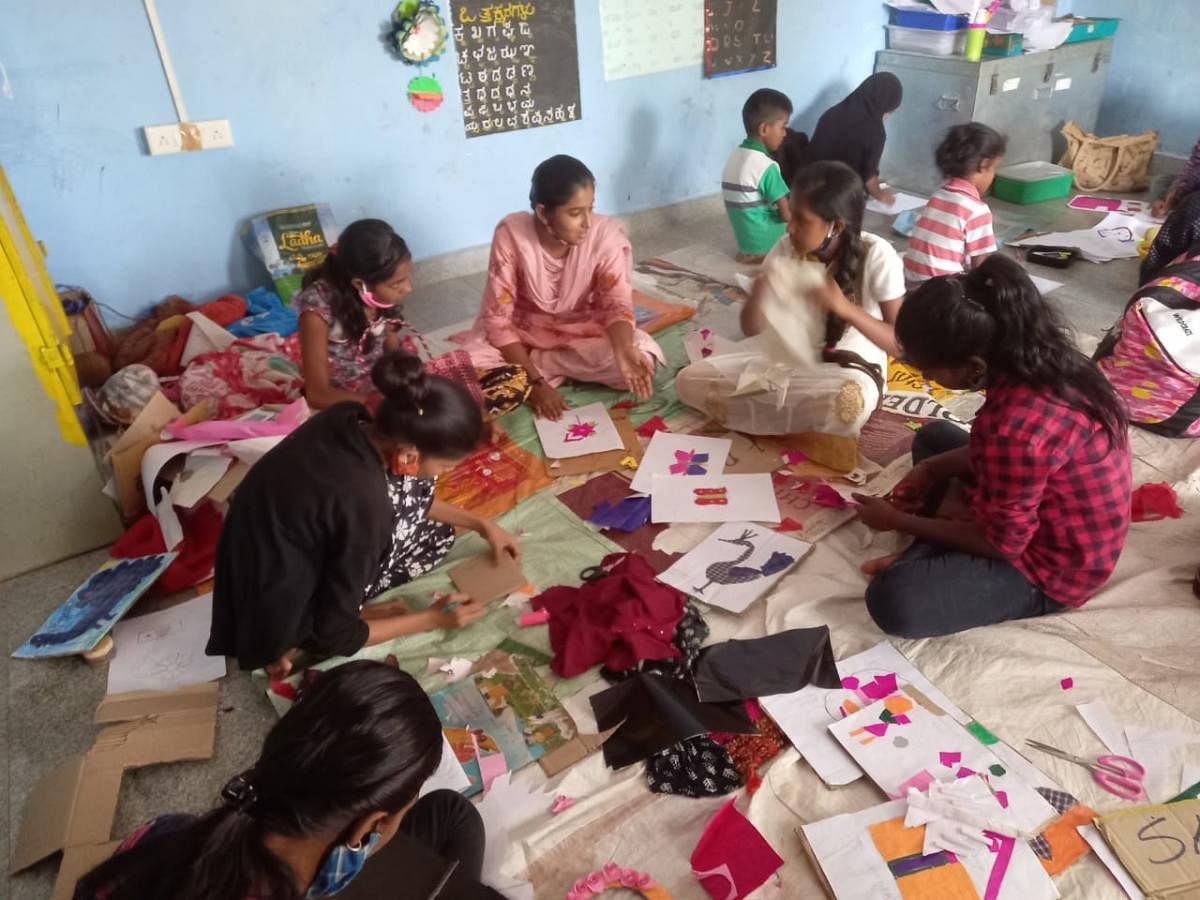

After school hours for children in Sathanur near Bengaluru are a treat. They rush home, hurry out of their uniforms, and zoom down to the Bija learning centre. Here they paint or draw, create art out of textiles, indulge in pottery and through all of this, they learn.
The purpose of the three learning centres, located around Sathnur in Ramanagara district, is to introduce holistic learning practices to the area.
Indira Vijaysimha, a retired professor from Azim Premji University, explains that the idea of Bija germinated in 2018. She also runs an alternative school, Poorna, for more than 25 years and the project was a way to extend the teaching methods beyond the school.
“It was a way to expand the kind of holistic and inclusive education to the community that surrounded the school geographically and engage with children from underrepresented and marginalised families,” she explains.
The alternative learning model has captured the enthusiasm of close to 80 children in the area. After schools reopened, this number is only growing.
Prema, a mother of two children, attests to children’s excitement regarding the alternative learning models. “They have been going since the day it opened two years ago,” she says. Her 12-year-old daughter is particularly interested in the dance classes that are conducted there.
The centres are spaces where the children in Sathanur, including children of migrant labourers, get to do a bit of everything. They play, craft and also study and are aided by the two teachers and volunteers.
Savitha Jaibhim, one of the facilitators, teaches Mathematics and Environmental Science.
The difference between a typical classroom and the centre is how these subjects are taught. “We emphasise activity-based learning,” she explains.
For instance, after children are taught to identify numbers, they play a game of forming groups based on numbers. This activity drives home the idea that children know how to count, add and subtract intrinsically. Charts and other teaching tools come to her aid in more complex topics for higher classes.
Community learning
Convincing parents that holistic education is important was an uphill battle when the Bija community centres were first started. After several meetings with Panchayat members, parents and the involvement of the local government school, parents came around to the idea.
While classroom learning is important, Prema, one such parent, now feels that alternative modes of learning provide children with the skills to learn from their surroundings.
She remembers one such learning session that involved the children’s immediate surroundings and agriculture. “The children were asked to identify different crops and the methods of growing them. They see these things every day. After they were involved in such an activity, they learnt how to learn from their surroundings, to pay attention to what is happening around them,” she says.
The children have not only learnt to learn from their surroundings but people in their surroundings have also come forward together to teach what they know. Tilak, a 24-year-old law student, often visits the centre to speak about and introduce the children to authors who he admires. William Shakespeare is a favourite. “I simplify plays or poetry so children can understand,” he says.
This kind of learning environment is also one that stimulates curiosity and fuels the instinct to question. Abhijit Devnath, an artist who frequently conducts workshops in the centre, explains that the hierarchy that is present between a teacher and students is generally absent. While engaging the children in creating textile art, he noticed that many had prior experience in sewing and also had unique ideas. “I learn from them and they learn from me. This creates an environment of mutual respect and confidence,” he says.
The learning centres also work to acquire and distribute notebooks and textbooks. Keerthana, now a II PUC student from Sathnur, not only benefited from the sessions conducted but also received assistance to pursue higher education. "The teachers helped me apply for hostel and college and because there was financial difficulty at home, they helped even with that," she says.
The principal of the Sathnur government school, Chandrappa explains that the proximity of the learning centres to children’s homes helped children not lose contact with education during the school closures because of the pandemic. “Children had started to forget what was taught in schools. The learning centres helped revise the subjects that children would have lost touch with,” he says.
Alternative learning methods that involve activity-based learning are important according to Devnath. "They enable children to create and contemplate their individuality and sense of self. This is invaluable," he adds. Apart from cultivating a sense of self, Indira feels that holistic learning engages the head, heart and hands, like Mahatma Gandhi advocated.
Deccan Herald is on WhatsApp Channels| Join now for Breaking News & Editor's Picks